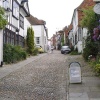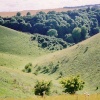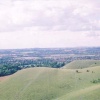Please login or click here to join.
Forgot Password? Click Here to reset pasword
 |  |  |  |  |  |
| Rod Burkey Posts: 554 Joined: 2nd Sep 2008 Location: UK | quotePosted at 15:18 on 2nd August 2014 I would be very tempted to use manual focus John, which means that the lens will focus on what you want, rather than what the camera selects. With a little practice you will be able to do this very quickly, like we all once had to before auto focus. My old eyes are glad that auto focus is now so good....most of the time. You might also wish to selectively use the focus points which hopefully can be shifted to suit.
|
| Dave John Posts: 22335 Joined: 27th Feb 2011 Location: England | quotePosted at 21:02 on 2nd August 2014 Totally agree, manual focus if possible unless you can hold that focus point rock steady, and with a damsel fly that will not be easy. Also ideally some sort of support for the camera although that is not always convenient when chasing bugs around. A monopod with ball and socket head would be my option |
| Vince Hawthorn Posts: 12758 Joined: 19th Apr 2010 Location: UK | quotePosted at 21:40 on 2nd August 2014 I have had this issue in the past, when taking shots where I think this will happen I stick to the Canon, the bridge cameras are great for a lot of situations but manual focus I prefer the dslr. One move you may be able to do is if possible select a centre focus only in the menu so that the focus is concentrated on the centre point of the viewfinder and can ignore the twigs and grass that gets in the shot. Agree withDave about the monopod- have used one myself my get in the habit of using it more. John, had a fox in the garden at the back of the shop this evening, trouble is at the time I was on the phone giving the weeks figures ( boss has to know Saturday night- can't wait till Monday ). As I was saying mr. fox in garden jumped over wall into car park, got a one handed shot having grabbed camera while talking on the phone but he was facing the other way. Then a car appeared so he turned round and ran back and over the wall which has a big drop down the other side to the car park so he had quite a jump and for a split second he scrambled over the top of the wall and we were eye to eye at about 4 or 5 foot away and then he was away along the top of the wall. I failed miserably and missed that magic moment even with the camera in my hand !!
|
| Edward Lever Posts: 734 Joined: 22nd Dec 2005 Location: UK | quotePosted at 17:27 on 4th August 2014 On 2nd August 2014 15:09, John Lawrence wrote:
This is a classic problem when attempting macro photography with the camera set to auto-focus. As Rod and Dave suggest, manual focus gets you into the right focus zone, but even then, the subject may move. The only way I have achieved even half-decent results in macro mode is to use an external flash, and to stop down as far as the lens will allow, within the constraints of flash guide number and desired ISO setting. Depth of field is very small at close distances, and setting a smaller aperture will increase the depth of field. |
| Edward Lever Posts: 734 Joined: 22nd Dec 2005 Location: UK | quotePosted at 10:12 on 5th August 2014 Sometimes, you may need to increase the ISO number to allow a smaller aperture setting. As always, it is a compromise between noise and required depth of field. Occasionally, it is possible to get a good sharp shot with a wide aperture and low ISO, as in Vince Hawthorn's recent excellent shot of a Dragonfly. In this case, the subject was all in one plane parallel to the sensor, and depth of field was not so critical. (BTW, if you are reading this Vince, maybe you can tell us whether you used flash?).
 Picture by Vince Hawthorn
|
| Vince Hawthorn Posts: 12758 Joined: 19th Apr 2010 Location: UK | quotePosted at 22:28 on 5th August 2014 Thanks for the comments Edward on my dragonfly shot. I must say I got lucky with this one, I was just leaning over a river bridge parapet taking shots of some blue dragonflies that were darting around all over the place at water level ( there is one shot posted of these ) and I went to the other side of the bridge where there was fallen trees jammed up against the bridge and the dragonflies on this side were a different breed and flying closer to the bidge top. This one rested on the fallen tree and all I had to do was lean over the parapet and take the shot, the camera was constantly being changed during the afternoon from sport mode to catch the darting insects to landscape for the scenery to "P" programme and to aperture priority which is the setting on which the shot was taken. Flash was turned OFF , I do not use flash very often and the afternoon was a bright sunny one with odd fluffy cloud or two. I was not aiming to get the dark background- another bit of luck and the final shot has been cropped to improve composition. There you go , 10% skill and 90% luck which is often the ratio for my shots. |
| Edward Lever Posts: 734 Joined: 22nd Dec 2005 Location: UK | quotePosted at 05:02 on 6th August 2014 Thank you, Vince, for clarifying whether the flash was on or off for the dragonfly shot. I can see now that you had good direct sunlight on your subject (in fact I should have looked more closely at the shadows of the insect's legs and guessed it was direct sunlight). As you modestly say, it was 90% luck, but my photography is like that too! And the dark background in your shot is very effective, which also made me think that you might have used flash. |
| Please login to post to this thread... |